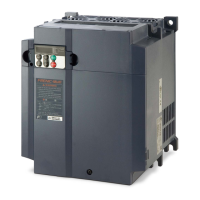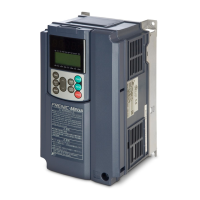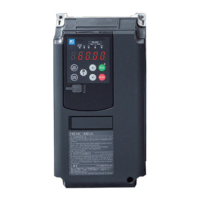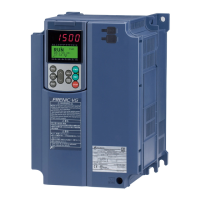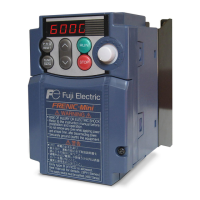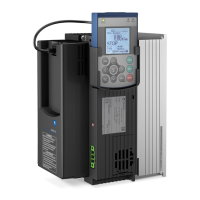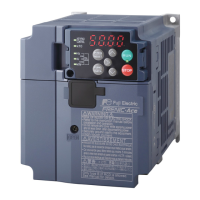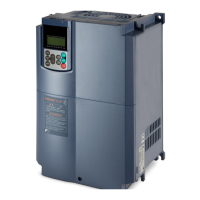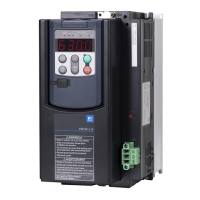4-4
Errors during tuning
Improper tuning would negatively affect the operation performance and, in the worst case,
could even cause hunting or deteriorate precision. Therefore, if the inverter finds any
abnormality in the results of the tuning or any error in the process of the tuning, it will
display
GT
and discard the tuning data.
Listed below are the abnormal or error conditions that can be recognized during tuning.
Possible tuning
error causes
Details
Error in tuning
results
- An interphase voltage unbalance has been detected.
- Tuning has resulted in an abnormally high or low value of a parameter.
Output current
error
An abnormally high current has flown during tuning.
Sequence error
During tuning, a run command has been turned OFF, or STOP (Force to
stop), BX (Coast to a stop), DWP (Protect from dew condensation), or other
similar terminal command has been received.
Error due to
limitation
- During tuning, any of the operation limiters has been activated.
- The maximum frequency or the frequency limiter (high) has limited tuning
operation.
Other errors
An undervoltage or any other alarm has occurred.
If any of these conditions has occurred, either eliminate the abnormal or error factor(s) and
perform tuning again, or consult your Fuji Electric representative.
If a filter other than Fuji optional output filter (OFL
-
-
4A) is connected to
the inverter's output (secondary) circuit, the result of tuning can be
unpredictable. When you replace an inverter, make a note of the old inverter’s
settings for the primary resistance %R1, leakage reactance %X, no-load
current, and rated slip frequency, and set those values to the new inverter’s
function codes.
4.1.4 Test run
If the user specifies the function codes wrongly or without completely understanding this
Instruction Manual and the FRENIC-Multi User's Manual, the motor may rotate with a torque or at
a speed not permitted for the machine.
Accident or injury may result.
Follow the descriptions given in Section 4.1.1, "Inspection and preparation prior to powering on" to
Section 4.1.3, "Preparation before running the motor for a test," then begin test-driving of the motor.
If any abnormality is found in the inverter or motor, immediately stop operation and determine the
cause referring to Chapter 6, "TROUBLESHOOTING."

